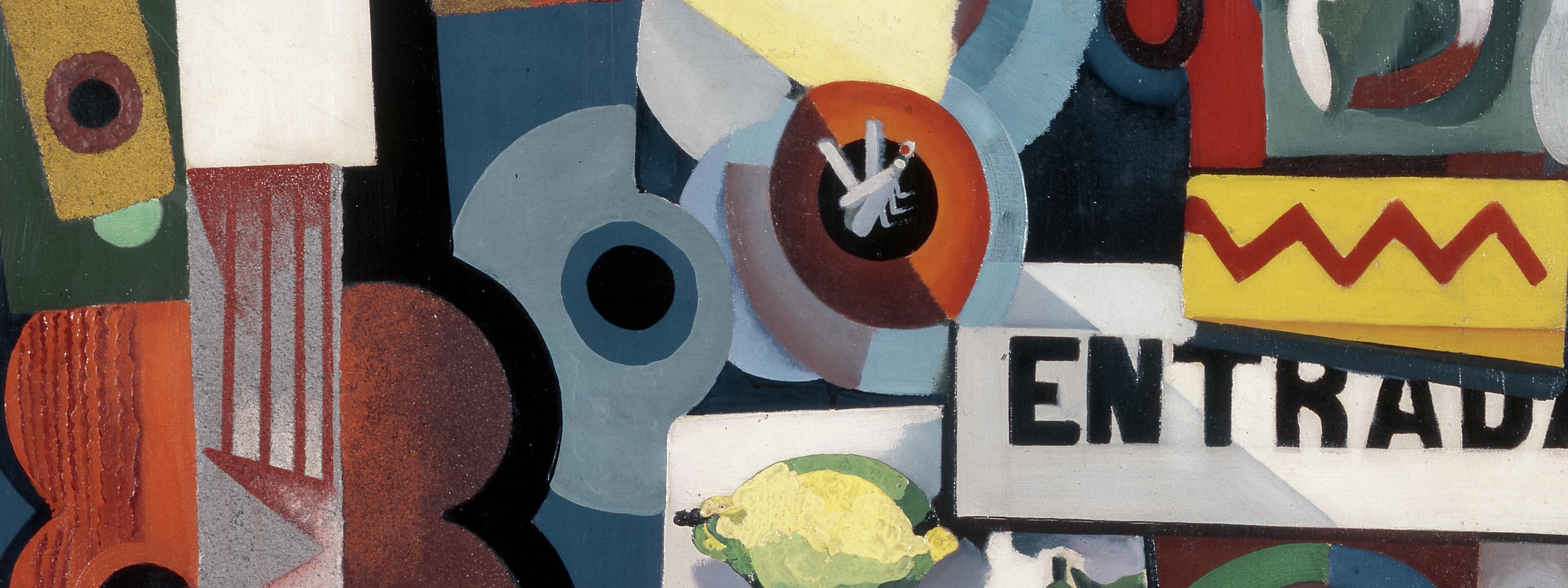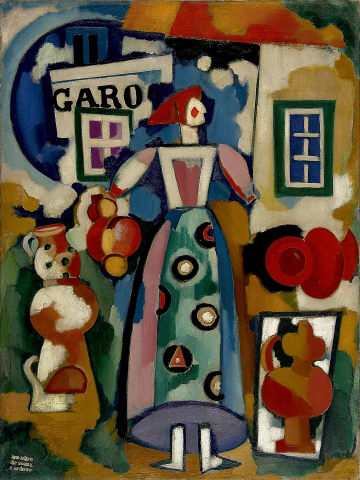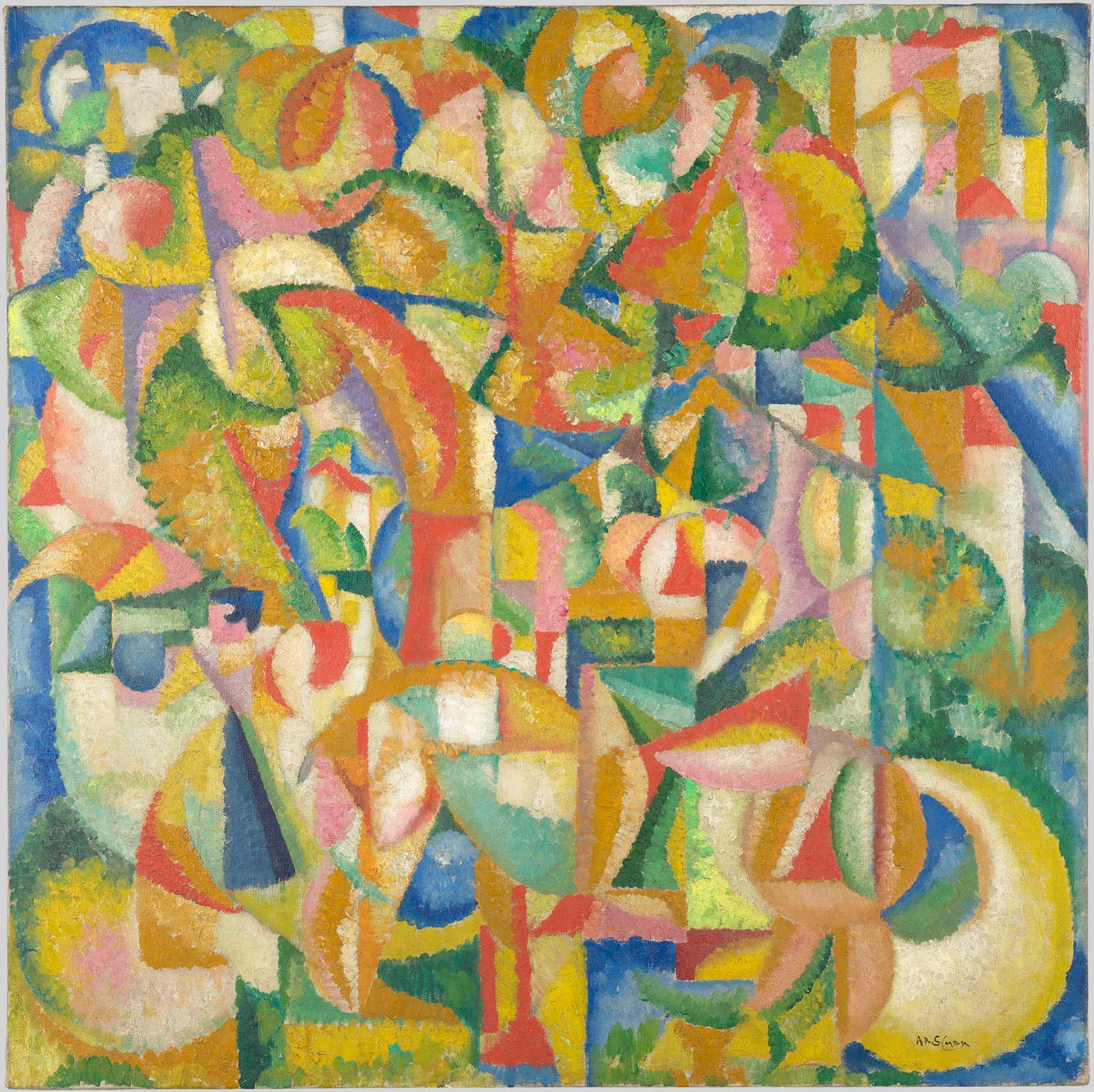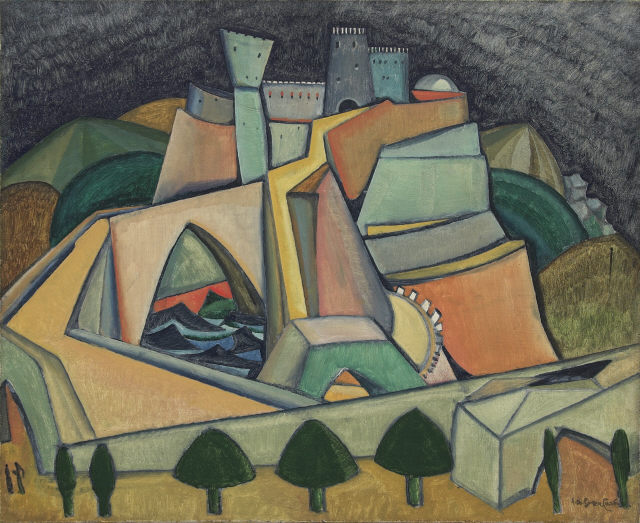
Amadeo de Souza-Cardoso, Title unknown «(Entrada) [Entrance]» (detail), 1917. CAM – Centro de Arte Moderna Gulbenkian, inv. 77P9.
Amadeo in Paris
Centre Pompidou, Paris: 03 April to 09 September 2024
A few years after Amadeo de Souza-Cardoso’s major retrospective at Grand Palais, the Portuguese artist is once again being highlighted in an exhibition in Paris, now at Centre Pompidou, in the museum’s galleries and in a strategy of presenting collections in dialogue.
Curated by Helena de Freitas, from CAM – Centro de Arte Moderna Gulbenkian, and Angela Lampe and Sophie Goetzmann from Centre Pompidou, Amadeo de Souza-Cardoso, Sonia and Robert Delaunay – Correspondence explores the relationship of artistic complicity between Amadeo de Souza-Cardoso (1887-1918) and the couple Sonia (1885-1979) and Robert Delaunay (1885-1941), immersing the visitor in the heart of the connections and exchanges between these three great figures of the European modernity.
Centre Pompidou has works by Sonia and Robert Delaunay in its collection, which is the result of a donation by Sonia and her son Charles, in 1964, and also owns a painting by Amadeo de Souza-Cardoso, entitled Cavaleiros (Cavaliers), from 1913. The exhibition brings together around 30 works by the three artists: 15 by Amadeo, five by Sonia and six by Robert Delaunay.
In 1912, Sonia and Robert Delaunay were surprised at their home in Paris by a young man who knocked on their door and introduced himself, saying “I am the Portuguese painter Amadeo de Souza-Cardoso”, marking the beginning of a long relationship of artistic complicity that expanded over time and geography.
Between 1915 and 1917, the Delaunay couple, refugees from the World War I, settled in Vila do Conde, north of Portugal. In the house called by Sonia Delaunay La Simultanée, they strengthened their ties with Amadeo de Souza-Cardoso, who had returned to Portugal in 1914, and with other members of the so-called Portuguese Futurist group.
Many projects were born out of this geographical convergence. All of them were shaped around fine arts experiences that, in different ways, furthered the Simultaneist movement developed by the Delaunay couple with the precise aim of launching expositions mouvantes [travelling exhibitions] in Europe. These were the first artistic actions of resistance to the centrality of Paris, challenging other ways of making and circulating experiences around light and colour, in the context of the avant-garde in the beginning of the 20th century.





The exhibition focused on the set of works presented, but also in the correspondence exchanged between Sonia Delaunay, Robert Delaunay and Amadeo de Souza-Cardoso, from 1913 to 1917, and its importance for a more contextualised understanding of the works on display.
The catalogue accompanying the exhibition includes a reproduction of the correspondence between the artists, translated into Portuguese for the first time. The tone of the correspondence, which is gradually cooling down, is related to the contingencies of the war and some mismatches brought about by chance, but also to Amadeo’s absolute resistance to accepting a group and school spirit. Reading this exchange in dialogue with the works on display opens up new interpretative possibilities, especially about the time when Sonia and Robert lived in Vila do Conde.
The catalogue also analyses this triangular relationship through an (epistolary) conversation between Helena de Freitas and Angela Lampe, on the strategic sense and opportunity of this exhibition format; an essay by Ana Vasconcelos, curator at CAM, who returns to this theme after the success of the exhibition The Delaunay Circle (CAM, 2015); an essay by the researcher Marta Soares on the theory of animism in Amadeo’s work; and a text by Sophie Goetzmann dedicated to the study of the correspondence exchanged between these artists and friends.
Explore the artworks